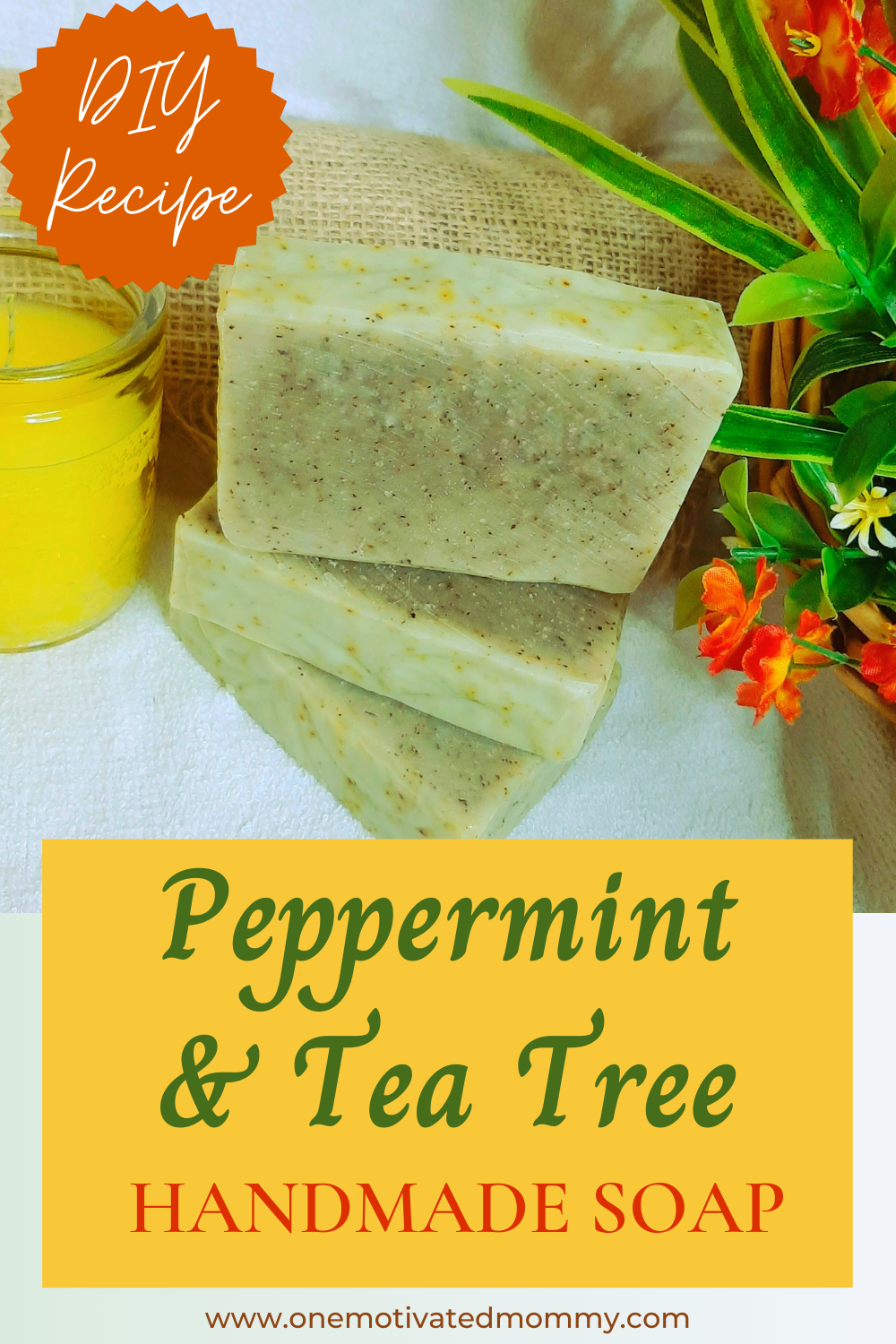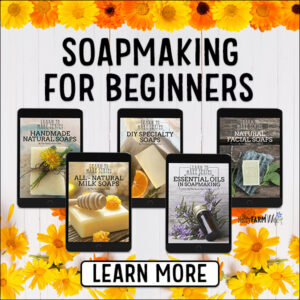Peppermint and tea tree are both well-known for their beneficial properties and combining these two powerful ingredients in a cold process soap can be a great way to enjoy their benefits.
This soap recipe creates a soap that is moisturizing, thanks to the natural oils as well as shea and cocoa butter which are known for their moisturizing properties. These ingredients can help to nourish and hydrate your skin, leaving it feeling soft and smooth.
It also contains peppermint leaves and the essential oils of peppermint and tea tree, which have antiseptic and antibacterial properties. These oils can help to fight off harmful bacteria and fungi that can cause skin infections, such as acne, eczema, and psoriasis. It may also help prevent acne breakouts and promote healthy skin.
In addition to the skincare benefits, this handmade peppermint and tea tree soap may also provide aromatherapy benefits. The fresh, minty scent of peppermint and the earthy, camphor-like scent of tea tree can help to uplift your mood, reduce stress and anxiety, and improve your mental well-being.
Ingredients
- 12 oz Olive oil
- 10 oz Coconut oil
- 4 oz Sunflower oil
- 2 oz Castor oil
- 2 oz Shea butter
- 2 oz Cocoa butter
- 4.55 oz Sodium hydroxide
- 12.15 oz Distilled water
- 1 Tablespoon dried peppermint leaves
- 0.5 oz Tea Tree essential oil
- 0.5 oz Peppermint essential oil
- 1 teaspoon spirulina powder (optional)
Spirulina was added for natural colour but it can be omitted.
Directions To Make Peppermint and Tea Tree Soap
Prepare your work area and gather your equipment and supplies.
Always be safe when working with lye. Put on your protective gear, goggles, gloves and long-sleeved clothing. Ensure that there are no children or pets in your production area.
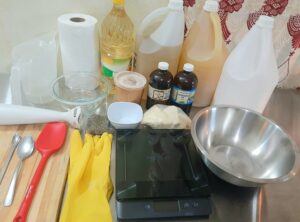
Prepare The Lye Solution
In a stainless steel or heat-resistant plastic container weigh the water.
Note: Always use non-reactive materials when working with lye. Avoid using aluminium, copper, or cast iron, as they can react with lye.
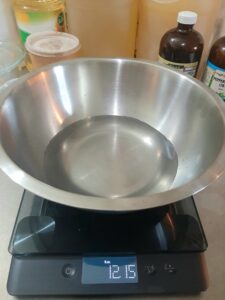
Next, weigh the sodium hydroxide in a separate plastic container.
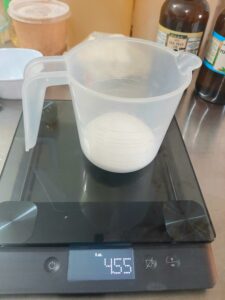
In a well-ventilated area, carefully add the sodium hydroxide to the water and stir it with a stainless steel spoon to dissolve fully. The mixture will become hot and give off fumes. Do not breathe in the fumes.
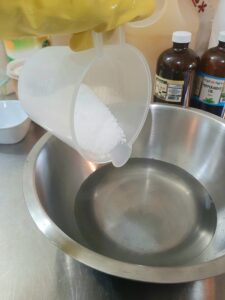
Set the lye solution in a safe place and allow it to cool to room temperature.
Next, weigh out the cocoa and shea butter in a heat-proof or microwave-safe container.
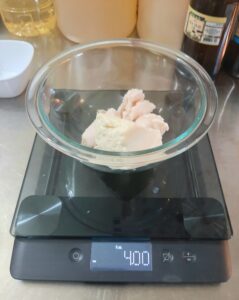
In the microwave or in a double-boiler, heat the butters just enough to melt them completely. Do not overheat them.
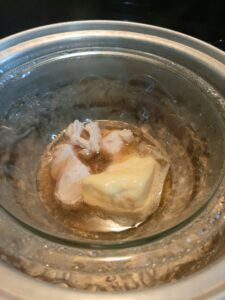
Weight the oils, then add them to the main mixing bowl.
(Personally, I like to start by weighing the castor oil directly into the mixing bowl, as it is so thick. Then I weigh the other oils separately, then add them to the mixing bowl. )
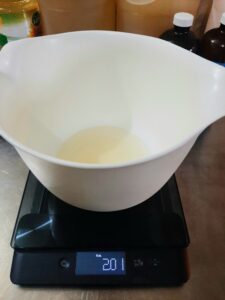
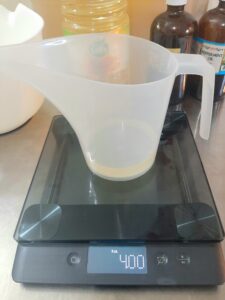
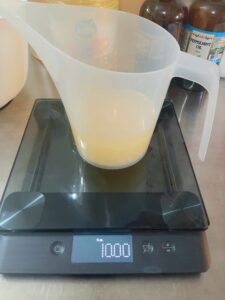
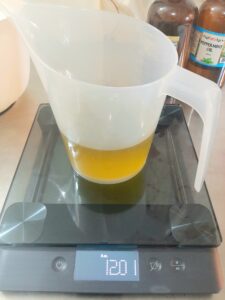
Add the melted butters to the mixing bowl with the oils.
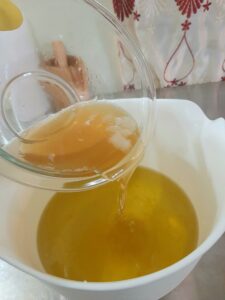
Next portion out the peppermint leaves.
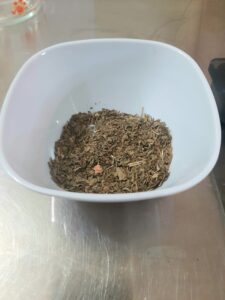
I wanted the leaves to be ground up into smaller pieces so I used a mortar and pestle to grind it further. You can also use a coffee grinder if you need to do the same.
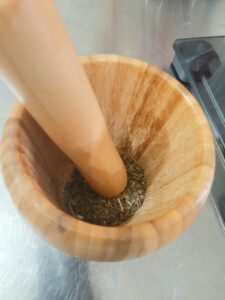
Prepare The Essential Oil Blend
I used a fifty-fifty blend of tea tree and peppermint essential oils for the soap – 1/2 ounce each.
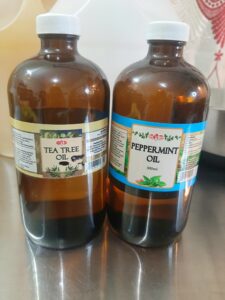
Weigh the essential oils into a glass or ceramic container. Avoid using plastic as essential and fragrance oils can degrade plastic.
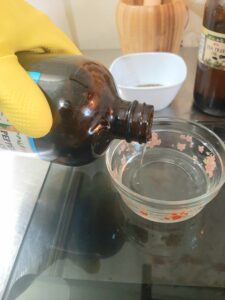
Now Let’s Make Peppermint and Tea Tree Soap!
Clear away all the unnecessary tools and ingredients and just lay out what is needed to make the soap.
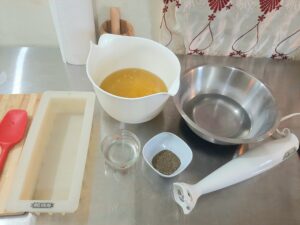
Add the spirulina to the bowl with the oils and blend with the immersion blender to mix it thoroughly.
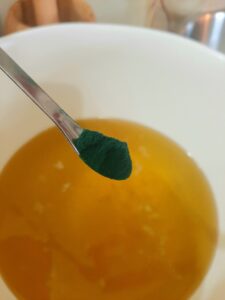
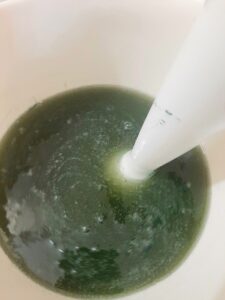
Next, add the ground peppermint leaves and mix them in with the blender.
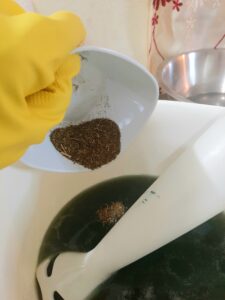
Carefully add the lye solution to the mixing bowl.
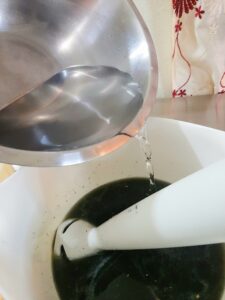
Blend the mixture until it is emulsified.
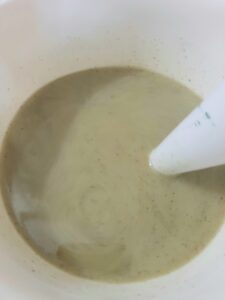
Next, add the essential oils.
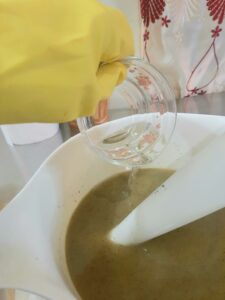
Using a combination of blending and stirring, mix the soap batter until it reaches ‘trace’. This is the point where the soap thickens and forms a trail or trace when it is drizzled onto itself. See the picture below.
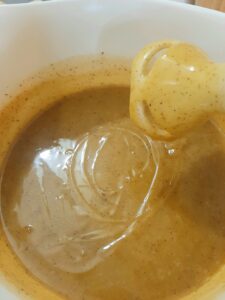
Once trace is achieved, pour the soap into the mould.
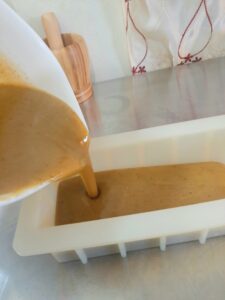
Gently tap the mould onto a hard surface like a countertop to remove any air bubbles from the soap. Be careful not to spill any soap or get it on your skin.
You may texture the top however you like. Just be sure to use non-reactive materials like a stainless steel spoon or fork or wooden skewer.
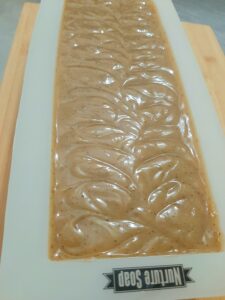
Set the soap aside in a place where it will be undisturbed and away from children and pets to allow it to solidify for at least 24 hours. If after this period it is still soft, allow it to rest for another day.
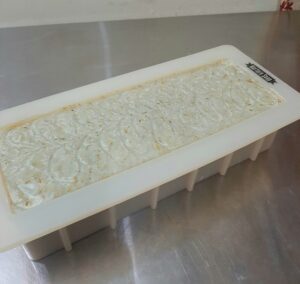
Once it is ready, remove it from the mould and cut it into bars.
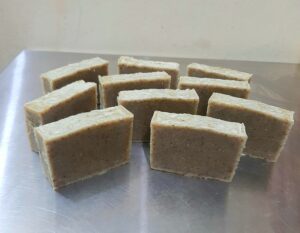
Place the soap on a shelf in a ventilated area and allow it to cure for a period of 4 to 6 weeks. During the curing period, occasionally turn the bars to expose all sides to air.
Once cured, pamper your skin and enjoy the refreshing, bubbly goodness of this peppermint and tea tree soap.
It’s handmade and packed with hydrating and antibacterial properties. Plus, it smells so aromatic and cooling, you’ll feel like you’re in a spa. Incorporating this soap into your daily routine can leave you with fresher, more radiant skin.
Happy soaping! 🙂
